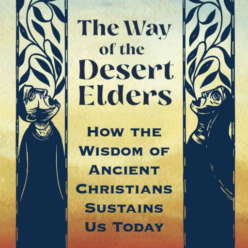Prayer Exercise
(a.k.a The 3 x in 7 days invitational)
First, a bit about Meditation-
Meditation: In prayer-
The half-way house between thinking and contemplating.
(Worship) Meditation is Recollection (a re-gathering):
No more and no less than the subjection of the attention to the control of the will. –Evelyn Underhill
Read her book “Practical Mysticism: A Little Book for Normal People” –free here:

From Meditation one may move to a stage of Contemplation.
The two contemplative purifications at work:
The purification of sense, and the purification of will.

If your prayer time has lost some of its richness, please enjoy this prayer exercise:
Meditation Prayer Exercise (7-20 min)
(Please note: It may take several, or many times of disciplined meditation, (as a spiritual practice), to move into a more contemplative prayer experience or mindset. I challenge you to have the courage to keep at it.)
1. Read through this exercise the whole way. (You will likely need to refer back to it during your meditation time, as well.)
2. Light a candle to represent the Spirit of God.
2. Slowly Read and Reflect on a portion of Scripture, or the following poem:
All our knowledge, sense, and sight,
Lie in deepest darkness shrouded.
Til Thy Spirit brake our night,
With the beams of truth unclouded.
Beginning this time of prayer and worship:
First, surrender to the influence of the Object of your meditation, [in this case, through the vehicle/aid of the poem words, visual aid (candle), plus symbolism (flame = Spirit)]. Surrender to The Divine exhibition of unexpected meaning, beauty, and power. Pray on these things.
Focal Point:
Not if, but when, your thoughts wander, or your attention wanes, bring your internal, (and external) gaze back to the flame of the candle before you. The chatter of your mind will be ceaseless at first. Refocus. Recall what the flame symbolizes, and the goodness of God, (Trinity-Creator, Savior, Spirit). Center, again, your awareness on the Object of your worship (God), in thanksgiving and grace.
As you continue to meditate: See your self distinctly from the Other, and, in time, transition to observing your connectedness; Move from a “multiplicity to a unity”.
Once you have been vested in the experience of meditation for a time:
You may notice how your efforts of trying to focus and worship God, may adjust to a resting or receiving from God, in silence of the mind, and spirit. In this case, there is no effort on your part, but a loving dispensing, from God, into your heart and mind.
Enter and enjoy this time as though receiving an inpouring of God’s love, healing, and grace.
This contemplative stage of prayer cannot be forced, and for some, it is a difficult experience to come by. If you never approach this stage during your exercise, the discipline of prayer and meditation, done routinely, can aid in the apprehension of this mysterious reversal called contemplation. This is the stage where praying/thinking, moves to determined focus, which may transform into surrendered contemplation–which is a nourishing and awing spiritual communion with God.
Thank you for reading.
Please share your thoughts.
(If you tried this exercise, now or in the future, please mention that here, as well.)
Thank you.
